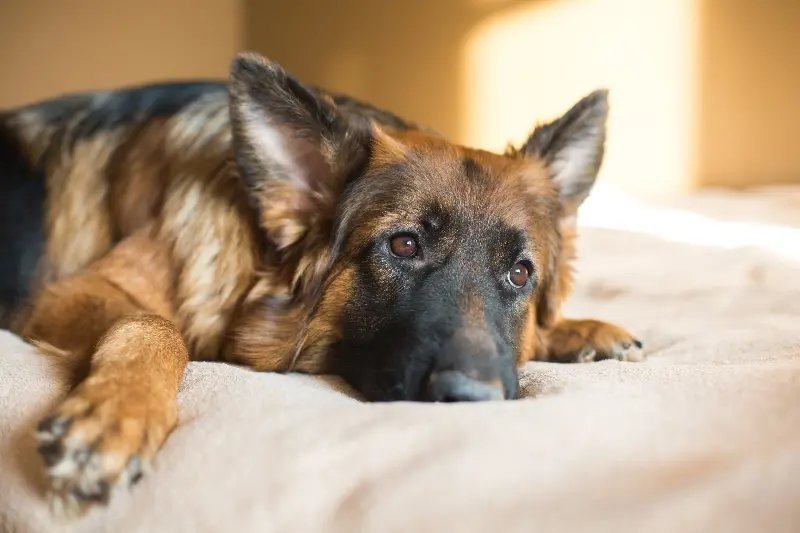
Dogs are our most-loyal companions, but they aren’t always transparent about their feelings. Dr. Colleen Guilfoyle, a veterinarian, told Newsweek that many dogs experience anxiety, but they’re surprisingly good at hiding it.
“From an evolutionary standpoint, advertising vulnerability can be risky,” Guilfoyle, who specializes in shelter medicine at Best Friends Animal Society, said. “So, dogs often rely on low-level appeasement and displacement behaviors, like looking away, lip-licking, and making slow movements, to avoid conflict while still coping with stress.”
Why Dogs Hide Anxiety
In the wild, showing fear or weakness could make an animal a target, and even after thousands of years of domestication, this instinct remains. Dogs tend to mask their discomfort through subtle cues, which can make it difficult for owners to recognize when something is wrong.
Ethological studies suggest that roughly one-quarter to one-half of pet dogs exhibit some form of anxiety-related behavior, but much of it goes unnoticed.
Common Causes of Canine Anxiety
Anxiety in dogs can stem from a variety of triggers. Noise sensitivities—such as fireworks, thunder, or even household sounds—are among the most common. Social fears, like encountering unfamiliar people or dogs, and separation-related distress when left alone, also play major roles.
Certain contexts, such as visits to the vet, car rides, or slippery floors, can also provoke fear. Environmental factors, poor early socialization, and inadequate maternal care are all linked to higher anxiety levels later in life.
Subtle Behavioral Signs To Watch For
While some anxious dogs tremble or bark excessively, most display far-subtler behaviors. Look for frequent yawning when they are not tired, lip-licking, avoiding eye contact, or showing the whites of their eyes—known as “whale eye.”
Others may slow down, freeze, hide, pace, or become unusually clingy. These quiet signals are often overlooked but can indicate that your dog is struggling to stay calm.
Physical Indicators You Might Miss
Anxiety can also manifest through physical changes. Dogs may pant even when it is not hot, drool, tremble, pin their ears back, or tuck their tails.
Dilated pupils and changes in posture are also key warning signs. These physiological reactions often appear before more serious behavioral problems, such as aggression, destruction, or attempts to escape.
When Anxiety Turns Into Bigger Problems
Guilfoyle said that anxiety becomes a clinical issue when it is persistent, severe, or disrupts daily life. A dog that cannot rest, eats poorly, or panics when left alone may be suffering from a recognized anxiety disorder such as separation anxiety, generalized anxiety, or noise phobia.
Left untreated, these conditions can lead to self-injury, aggression, or even relinquishment to shelters.
How To Help Your Dog Cope
If you suspect anxiety, then start by consulting your veterinarian to rule out medical causes. From there, a comprehensive approach works best.
Environmental management—create safe spaces, use white noise, and establish predictable routines.
Behavior modification—focus on positive reinforcement, desensitization, and relaxation training: avoid punishment, which worsens fear.
Medication—in moderate to severe cases, vets may prescribe medication to help dogs regain emotional balance.
Ultimately, as Guilfoyle said, anxiety isn’t a sign of stubbornness or poor training—it is a welfare issue. Your pup may not “tell” you they are anxious, but their body language speaks volumes.
Spotting these signs early can prevent long-term problems and keep your best friend happy, secure, and thriving.
Do you have funny and adorable videos or pictures of your pet you want to share? Send them to [email protected] with some details about your best friend, and they could appear in our Pet of the Week lineup.
